
![IMG_3295[1] - Growing Spaces Greenhouses Gardener tending to plants in a Growing Dome greenhouse](https://growingspaces.com/wp-content/uploads/2018/12/IMG_32951-1024x768.jpg)
Our Growing Dome Planting Schedule allows you to optimize yields year-round!
Planting year-round in a Growing Dome will give you a continuous supply of fresh fruits and vegetables in all four seasons. Planting seasons in a Growing Dome are considerably more flexible than outdoor gardening, due to the inherent climate control, diffused light, and high-quality soil. Still, the day length, sun exposure, and temperatures are important factors to consider when planning your crops and ensuring your year-round gardening success.
In Colorado (and all other states in zones 4-5) the best time to begin the summer growing season is in mid-March, and the winter growing season in mid-September. Crop rotations and new planting can also be done throughout the two seasons, keeping in mind both the summer solstice and winter solstice peaks.
Planning for the upcoming season should generally take place a month before your previous seasonal crops are finished producing. This gives you ample time to order and organize all your seeds and transplants. Below you will find more information on the planting schedule specific to the Rocky Mountains and all other regions in growing zones 4-5.
Mid-March:
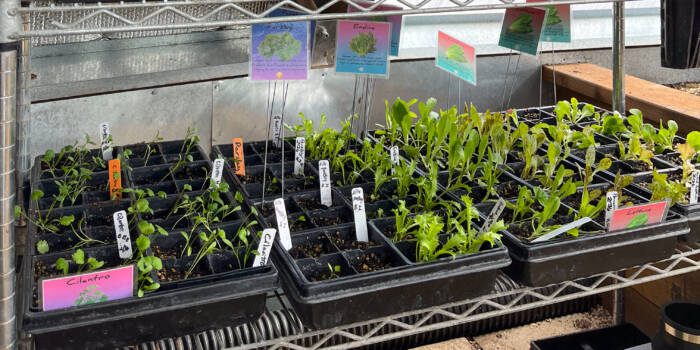
The recommended time to begin planting summer season crops is around mid-March when the soil is becoming warm enough for seeds to germinate. Refer to your planting guide for optimal germination temperatures. This will give you a bountiful harvest all summer long.
It is also good to take into consideration shade needed in the heat of the summer. Especially if you live in a hot weather climate, it can be advantageous to plant vining fruits and vegetables in the outer beds of the dome to create shade and cool the domes during the summer. Refer to the section on Keeping Your Greenhouse Cool in the Summer for more information.
Mid-September:
The recommended time to begin planting winter season crops is around mid-September when the soil is still warm enough and there is enough sun for the seeds to germinate and get healthy before winter. These are the seeds and starts for your cold hearty crops.
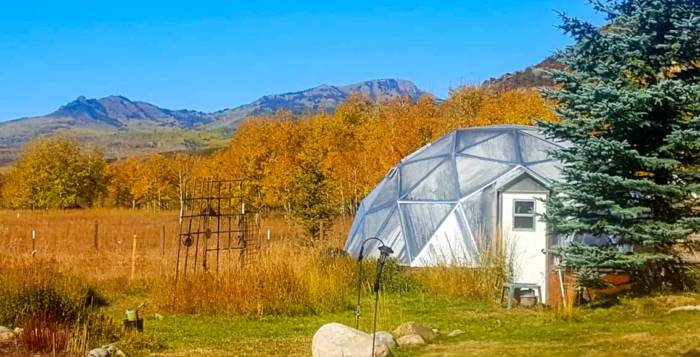
At this time of the year your summer crops will potentially still be producing, though likely past their peak. Because of this, it may seem as if you have limited room to plant new crops. However, you may also noticed that most of the summer crops now have large foliage, higher up in the Growing Dome, leaving bare patches of soil available to direct sow the seeds for your winter root vegetables that don’t transplant well (i.e.: turnips, beets, radishes, carrots, etc.).
The leafy vegetables can be sown in flats, which we would advise you to place on the crossbar of the Growing Dome pond feature. This space not only gives you extra room to start seeds, but it will also keep your seeds warm and moist compared to placing them around the periphery of the dome. These seeds will be ready for transplanting to their final location, about mid-October. This will ensure a timely supply of veggies all winter.
Also, reference our detailed planting planner for Zone 5a.
Winter Solstice:
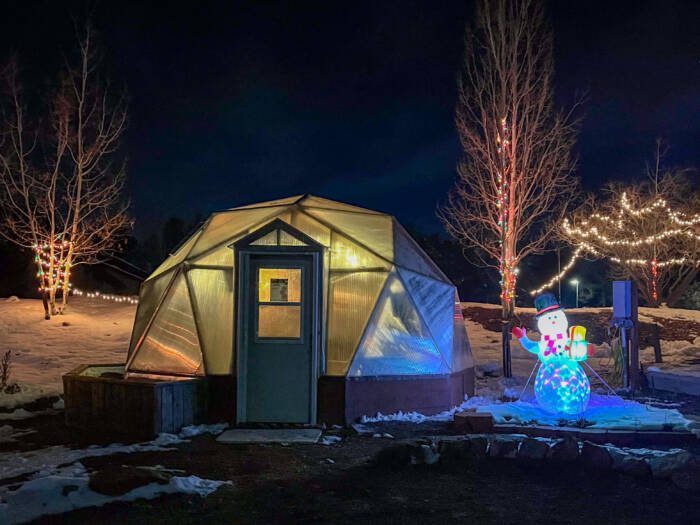
Some customers like to plant another round of cold hearty crops either in early December, before the winter solstice, or late January, when we are coming out of the winter solstice. Using this strategy, you will be able to have continuous greens available until May or June. You may require supplemental grow lights in Zones 3 or lower, or if your plants are leggy.
If you so choose, many gardeners allow this ‘middle season’ to be the time in which their beds rest. Although cover crops can be grown year-round, January is a great time to optimize this amazingly nutrient-dense crop for the health of your soil.
Annual Plants:
Below are some seasonal crops to plant in your Growing Dome listed by sun or shade loving groups.
Summer Season Crops:
Sun Loving:
Tomatoes, cucumbers, squash, peppers, onions, leeks, chives, beans, peas, eggplant, melons, fennel, collards, romaine, basil
Shade Loving:
Most head lettuces, spinach, chard, kale, beets, radishes, turnips, arugula, mustard, bok choy, broccoli, cauliflower, cabbage, cilantro, nasturtiums, borage, calendula, carrots, dill
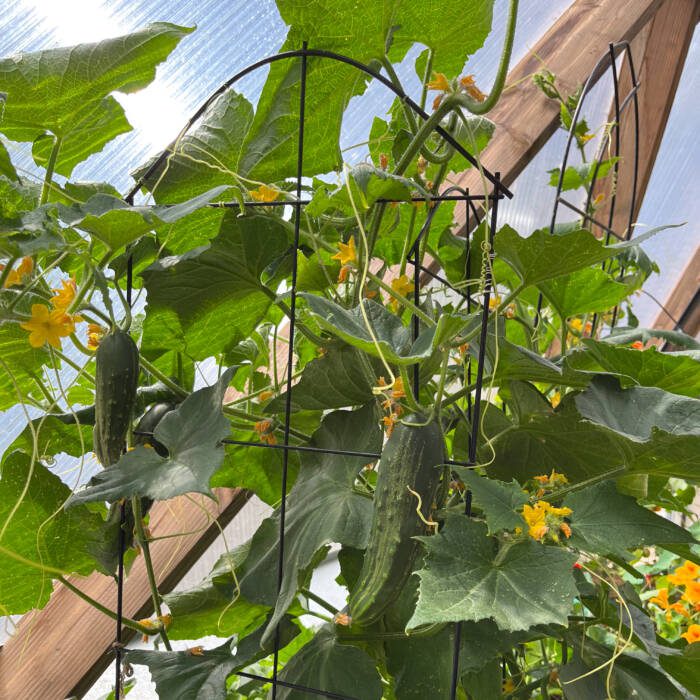
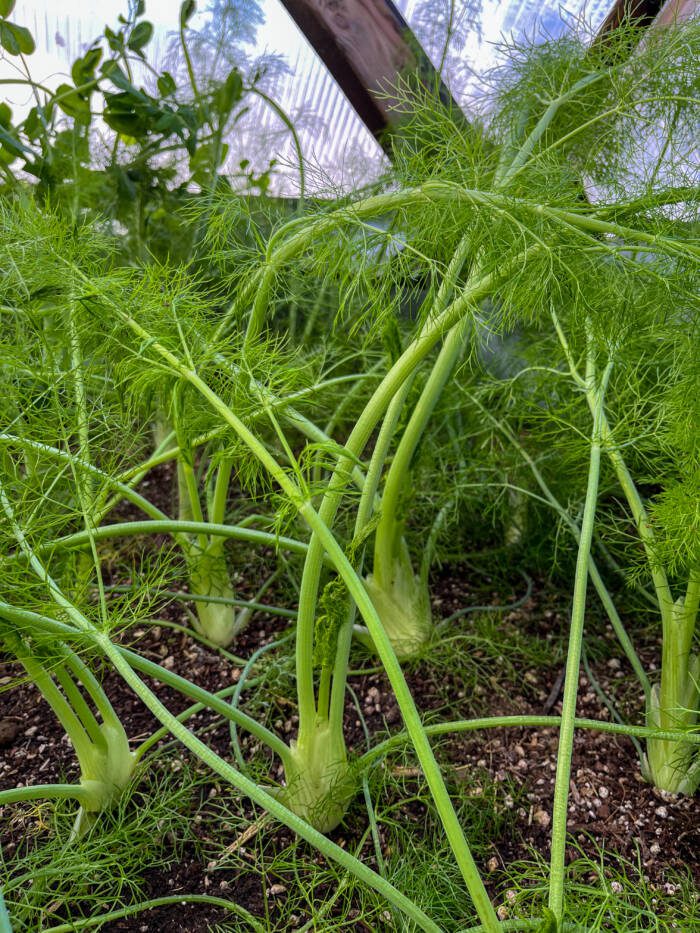

Winter Season Crops:
Sun Loving:
Beets, turnips, radishes, cabbage, collards, broccoli, cauliflower, lettuce, chard, nasturtiums, calendula
Shade Loving:
Most lettuces, chard, kale, nasturtiums, arugula, bok choy, spinach, mustard
Most of the dome still gets light in winter because trees and vines lose their leaves, which is why you see crops listed as both Summer and Winter. The primary consideration is to plant cold-sensitive winter plants in the central island or nearer to the tank to protect from frost.
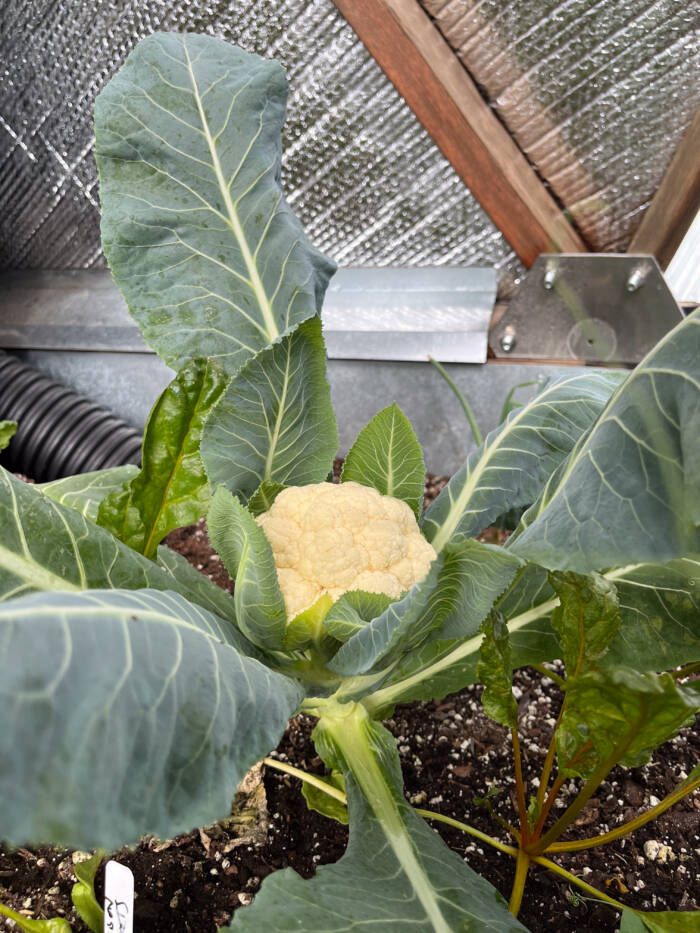
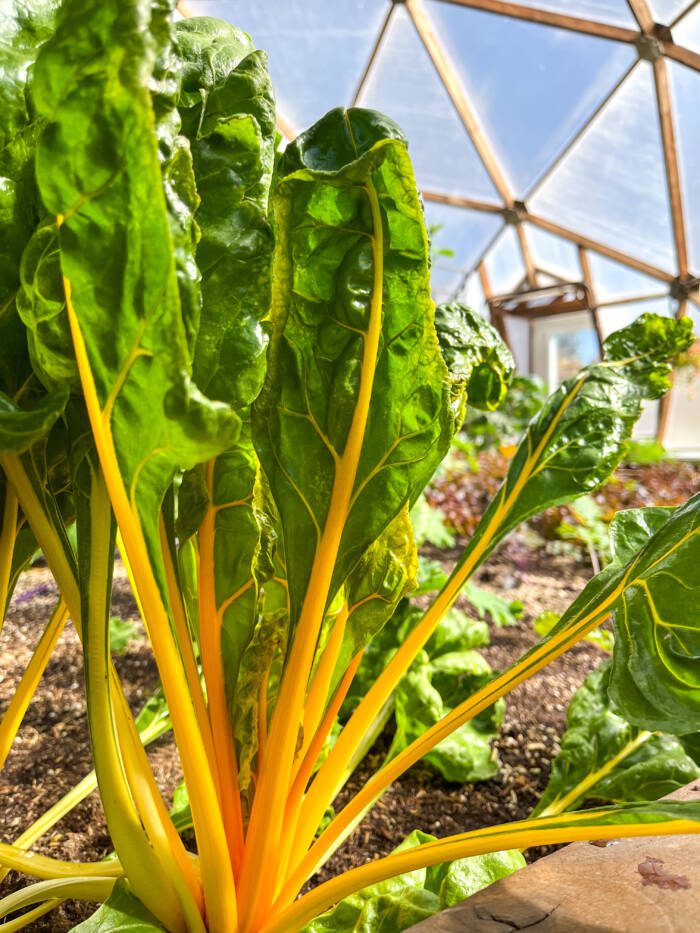
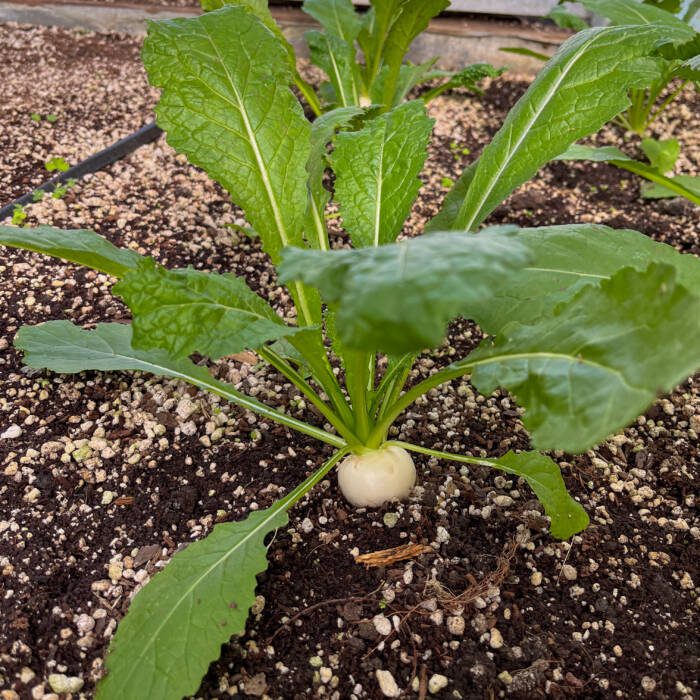
Perennial Plants:
Perennial plants grow year-round. Considerations for perennials are ensuring appropriate space from other perennials so that things will not be crowded when fully grown. Also, consider the distance from polycarbonate walls to save yourself the future trouble of having to constantly cut these plants back away from poly.
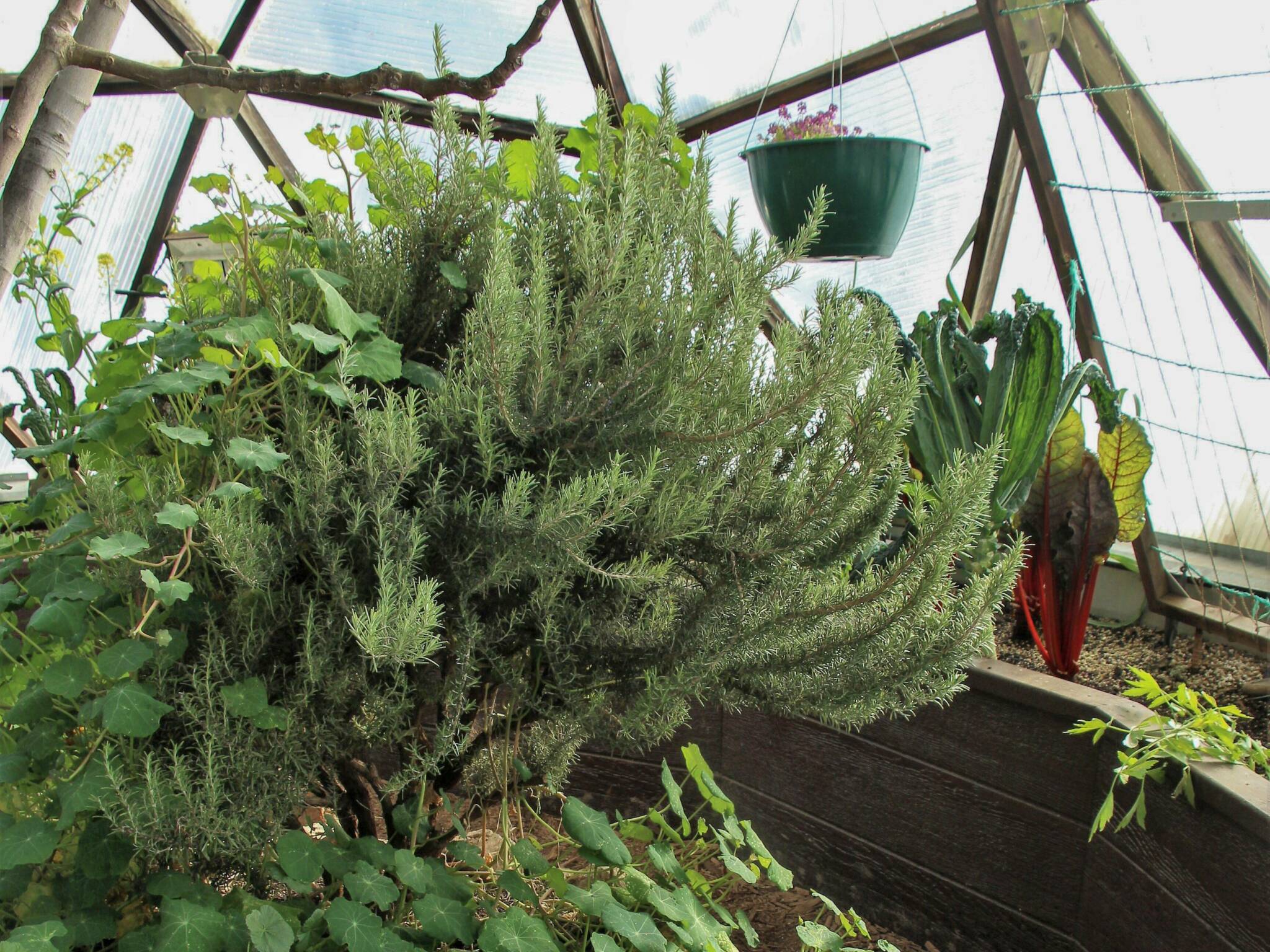
Many perennial herbs like rosemary, oregano, thyme, and lavender can inhibit the growth of other plants, if the root structures are near each other. This is called allelopathic. When planting these perennial herbs that tend to be aromatic and high in volatile oils, it is often best to create a barrier in the ground (like a pot or box) that will give you more freedom to plant vegetables near those herbs with success. Some perennials like rosemary, citrus trees, most tropical flowers, and many more prefer sandy, well-draining soil. It is recommended to prepare your perennial soil appropriately for that plant to ensure years of successful growth and beauty.

Most perennials are sun-loving but some prefer a sunny spot nearer the tank for protection from frost. This would be any perennial rated zone 6 or less. Some herbs like mint, thyme, and oregano and some vines like wisteria, roses, and grapes can handle outer beds because they are rated for zone 5 or less.
Climate Zones
Your dome has micro-climates that provide different optimal growing areas for different types of plants. So we also created a Growing Dome Greenhouse Planting Guide to help you not only grow the right plants in the right season but also grow the right plants in the right location of your dome!

To learn more about the health of your soil and what to plant in your Growing Dome® Greenhouse, join our online learning community here.
